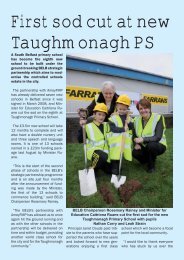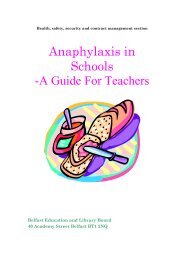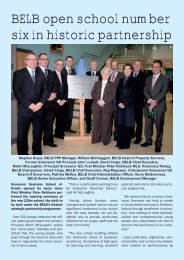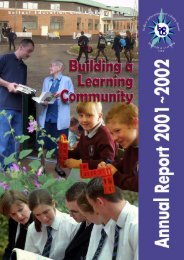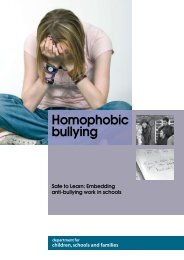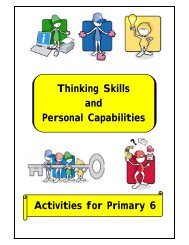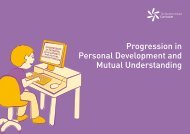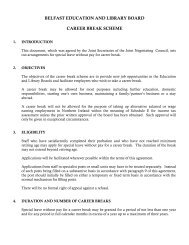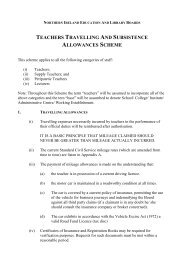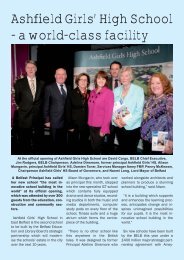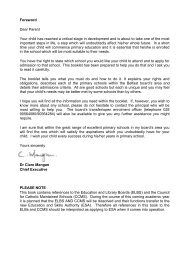Active Learning and Teaching Methods for Key Stage 3 - Northern ...
Active Learning and Teaching Methods for Key Stage 3 - Northern ...
Active Learning and Teaching Methods for Key Stage 3 - Northern ...
Create successful ePaper yourself
Turn your PDF publications into a flip-book with our unique Google optimized e-Paper software.
<strong>Key</strong> <strong>Stage</strong> 3CAROUSELSkills••Working with OthersThinking, Decision-MakingWhat is it?• This is a structured in<strong>for</strong>mation or thought-gathering activity which generates areasonably concise list of pupils’ thoughts <strong>and</strong> responses on a particular topic. Pupilswork in small groups to convey ideas or to make suggestions as regards the issue at h<strong>and</strong>.They also have the opportunity to assess collaboratively the ideas of other groups <strong>and</strong> touse them as a possible basis <strong>for</strong> <strong>for</strong>ming their own responses to questions. See OpinionFinders or Post-Its Collection <strong>for</strong> some more useful small group in<strong>for</strong>mation-gatheringactivities.Implications <strong>for</strong> classroom layout• Pupils might need to rotate in groups to different desks in a room. Alternatively, pupilscould remain seated <strong>and</strong> pass their flip chart sheet to the group beside them after theallocated time.How does it work?1. Pupils are divided into small groups.2. Each group is given a flip chart sheet or an A3 sized piece of paper with a question relevantto a particular topic at the top. Each piece of paper might have a different question.3. Pupils work in their groups within a time limit to write down their responses, thoughts <strong>and</strong>ideas which stem from the initial question.4. Each group might be given a different colour of pen to allow <strong>for</strong> easy identification ofresponses afterwards.5. After the allocated time pupils rotate to another sheet with a different question.6. They read the responses of the previous group <strong>and</strong> discuss whether they agree ordisagree. If they agree, they tick. If they disagree, they could justify this by writing anexplanation.7. Pupils then write down their own thoughts on the issue. If their ideas have stemmed fromthe previous groups’ written responses, they could connect the ideas with an arrow.8. The carousel could be continued, if time permits, until each group has had the opportunityto see <strong>and</strong> respond to each question.9. A debrief afterwards is beneficial.10. Carousel is also a useful evaluation tool. Questions might include: what have you learnedtoday? What was the most surprising/shocking/interesting/useful thing <strong>for</strong> you today?What might you have done differently?12



